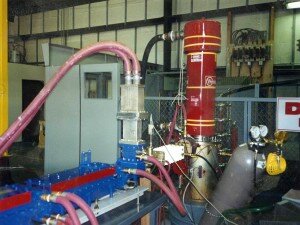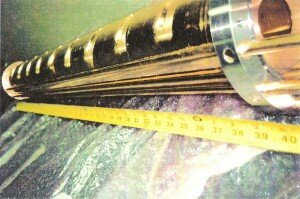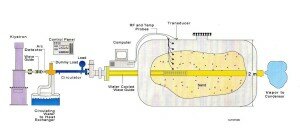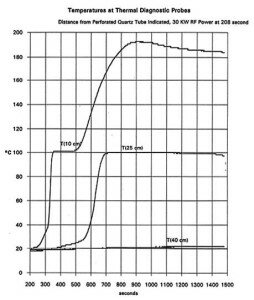Pictured above is the prototype microwave system for the decontamination of soils that formed the basis of the High Power Microwave system design. The power supply is located in the background of the photo. The red vertical cylinder is a VKS-8269A 500 KW Continuous Wave Klystron Tube. The power generated by the klystron tube is equivalent to 500 microwave ovens. The blue equipment in the foreground is a circulator that protect the klystron tube from reflected power by shift the phase and directing it to a dummy load (brass colored rectangular equipment attached to the top of the circulator) where reflected energy is coupled into water circulating in the red hoses.
Power generated from the klystron tube is directed to a phased-array antenna (pictured above) that is place into a well to radiate a focus microwave beam that can be directed in any direction desirable.
A bench-scale test was conducted using the HPM system to test and verify numerical simulation of microwave propagations in in the subsurface. An array of RF and temperature probes measured the propagation of microwaves from the antenna in a large steel tank filled with moist soil.
Temperature profiles at various distances from the antenna show the propagation of a phase boundary moving outward from the antenna. Once water is removed from the soil the microwaves move outward and heat water at greater distance. The near field area shows a cooling effect from vapor migrating toward the antenna from the far field heating region. The data verified numerical simulation and agree with correct physical interpretations that predict thermal runaway is not an issue.



